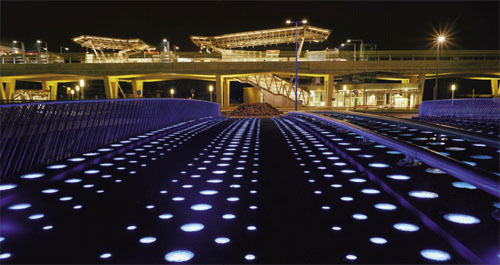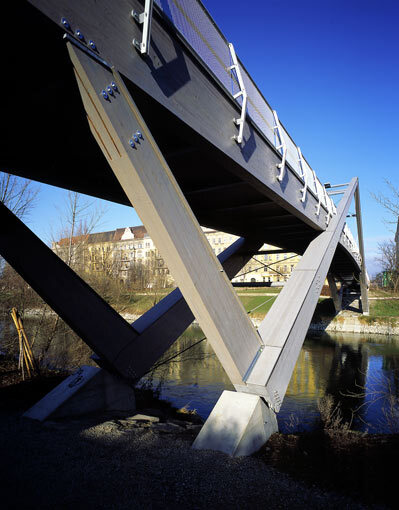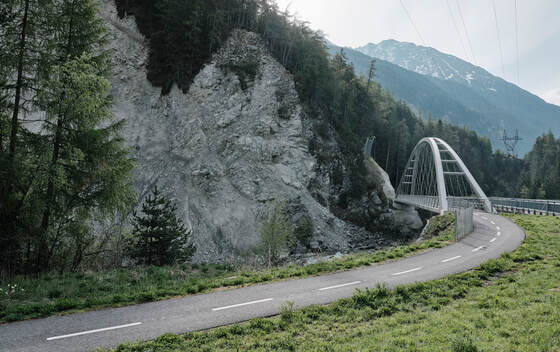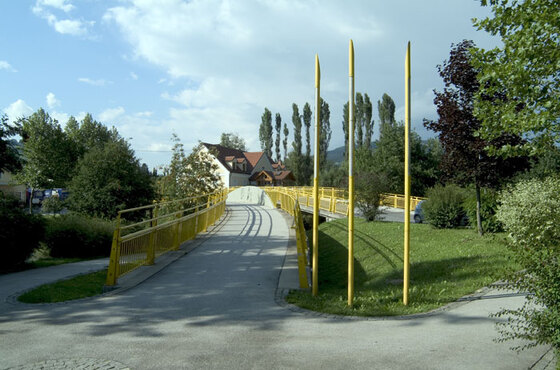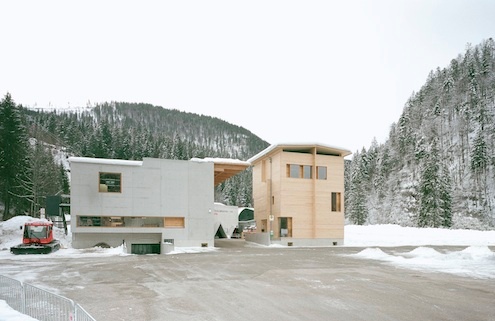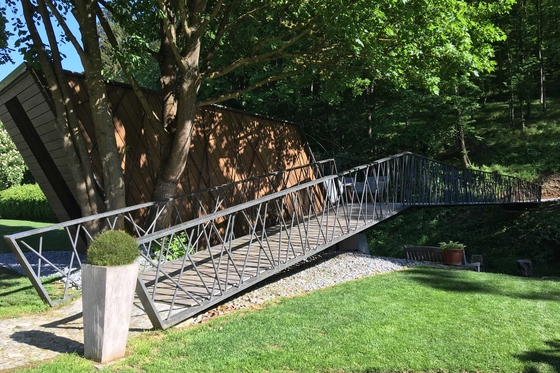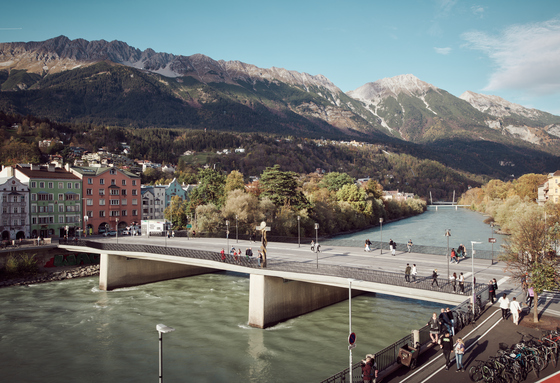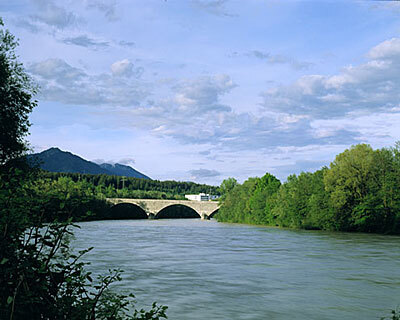Bridges, Rotterdam
Hans Moor Architects make innovative designs based on Darwin’s theories.
Hans Moor compares the evolution of architecture to that of a plant or animal species, which is driven by mutations in genetic material. His own design method is based on Darwin’s theory of the survival of the fittest. It consists of testing and combining design variants on different levels of scale, using three-dimensional computer programs, in order to come up with the most suitable solution both from the point of view of architecture and with respect to the economical use of material, energy, money and time. Moor’s method may seem theoretical and prescribed, but his buildings are fortunately not; he always proceeds from the spatial experience he wants to create for the user.
The „Absence of light“ bridges are part of a larger commission in the Rotterdam suburb of Nesselande which will eventually contain 4500 dwellings. Half a kilometre away is another bridge that Moor built in 2003: the „Bridge of wind and water“. A water and wind installation (windmill) coupled to this pedestrian/cyclist bridge and a steel grid in the centre of the deck are intended to raise users’ awareness of their surroundings. In due course it will be joined by a „Bridge of horizon and difference“ that incorporates a covered section from which pedestrians can look out over the horizon of Lake Zevenhuizen. Moor also designed the recently completed „De Hapering“ metro station that is part of the Nesselande „transport island“.
Access to this transport island is provided by the „Absence of light“, a family of seven bridges that splits the different traffic flows into separate bridge decks for cars, cyclists and pedestrians. At the head of the family are two large bridges for vehicular traffic, on the west side of the island. The lighting of these bridges is integrated with the structure: in the evenings and at night the bridge is a trail of light that illuminates the road deck and the surrounding area. The concrete structure is perforated with a pattern of dots of varying diameter. The round holes are filled with specially developed glass light fittings containing blue LED lighting. The perforations also make the area below the bridge lighter by day and by night. The substructure is likewise designed to appear as light as possible; the slanting concrete columns all tend inwards, accentuating the horizontality of the bridge which appears to float on the water. The balustrades with their slender diagonal rails are of powder-coated steel.
The cyclist section of the bridge for slow traffic, which is next to the two car bridges, is structured and illuminated in the same way. The pedestrian section is designed as a separate zone. The deck consists of perforated aluminium sheets, interrupted every three metres by a glazed strip with integrated lighting. The other five bridges for non-motorized traffic are simpler versions of the big bridges but without the integrated lighting.
Moor’s architectural interpretation of evolutionary theory extends beyond technical innovation and economical designs. The horizontality, the everyday materials and grey and blue palette of concrete, steel and glass gives this substantial piece of infrastructure a distinct, coherent presence that is naturally embedded in the Dutch landscape.
